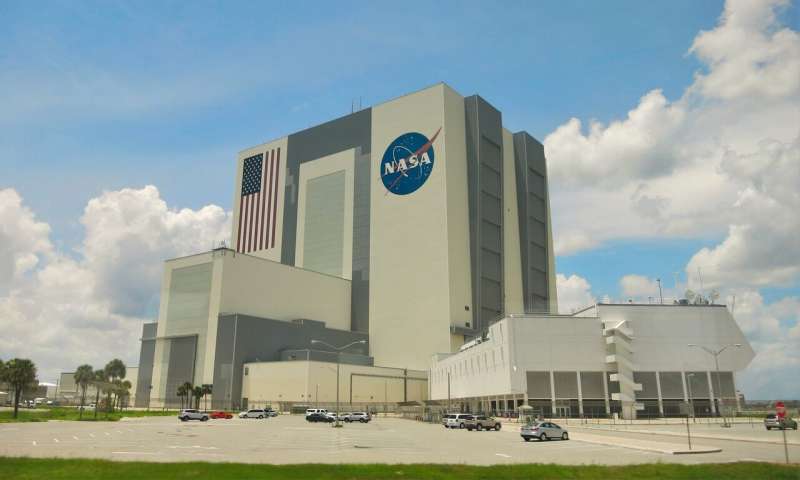The previous two launch attempts both ended explosively. SpaceX is currently preparing for its fourth test flight.
NASA, which leases LC 39-A to SpaceX, had in 2019 completed a less rigorous Environmental Assessment under the National Environmental Policy Act for Starship, but it was never submitted to the FAA for a launch license. Changes in the rocket design since and SpaceX's intended launch plans prompted NASA to call for a more stringent EIS, a process that could take around 18 months to complete.
"The SpaceX proposal includes constructing the necessary infrastructure to support up to 44 launches per year from Launch Complex 39-A with Super Heavy booster and Starship vehicle recovery landings at LC 39-A or on a droneship, or expending them in the ocean," reads a statement from the FAA.
The call for 44 launches builds on 2019's plans that called for up to 24. That plan also envisioned landings at Canaveral's Landing Zone 1 similar to how Falcon 9 boosters return to land. The new plan envisions Super Heavy boosters returning back to the launch site at KSC.
For now, the fully stacked rocket takes off from a 469-foot-tall launch integration tower at the Texas site, which SpaceX CEO Elon Musk refers to as "Mechazilla." It's designed to one day capture the Super Heavy booster on its return with the aid of two pivoting metal arms called the "chopsticks," but that has yet to happen.
The FAA published its notice to conduct the EIS on May 10 on the federal register.
Up next are two in-person public meetings on June 12 from 2-4 p.m. and 6-8 p.m. at the Radisson Cape Canaveral at 8701 Astronaut Blvd. in Cape Canaveral and June 13 from 6-8 p.m. at the Kennedy Space Center Visitor Complex on Space Commerce Way in Merritt Island. There will also be one virtual meeting on June 17 from 6-8 p.m. accessible from the FAA's SpaceX Starship-Super Heavy at Kennedy Space Center's project webpage.
Considered the "scoping period," the public can submit comments in person or electronically through June 24 before the EIS moves into its next phases.
SpaceX will prepare the EIS under the FAA's supervision, and its completion doesn't guarantee a launch license.
The original 2019 EA called for building a launch mount, liquid methane farm, transport road, deluge water system, landing zone and high-pressure gaseous commodity lines.
NASA issued that year a "Finding of No Significant Impact" concluding "the environmental impacts associated with Starship-Super Heavy infrastructure development and operations would not individually or cumulatively have a significant impact on the quality of the biological or physical environment," according to the FAA.
"While the purpose and need for Starship-Super Heavy at LC 39-A have not changed since the 2019 EA, the Starship-Super Heavy concept of operations has evolved from the original 2019 EA scope," according to the FAA.
Earlier this year, the Air Force announced it too was starting an EIS for its own potential Starship site with its primary choice of Canaveral's Space Launch Complex 37. The site has for years hosted United Launch Alliance launches, but ULA's lease is set to end after the final Delta IV Heavy mission this past April. A second undeveloped launch complex is also being considered.
The Department of Defense is interested in Starship's capabilities to support its mission and wanted its own pad for launches similar to how SpaceX maintains Falcon 9 launches from Canaveral's Space Launch Complex 40 in addition to the KSC pad.
The Air Force detailed its plans for its EIS on the website spaceforcestarshipeis.com, and has already had its series of public meetings.
Starship is SpaceX's planned fully reusable rocket meant eventually to replace its Falcon family of rockets. Elon Musk's goal with the vessel is to enable settlement of Mars. The rocket has the capacity to fly up to 100 passengers or up to 500,000 pounds of cargo to space, which is more than three times the payload capacity of Falcon Heavy.
The capacity of potential point-to-point flights on Earth that could rapidly deploy cargo or even troops also has the Department of Defense interested in Starship's success.
NASA is counting on a version of Starship to be used for the Artemis III mission as the human landing system that will bring astronauts, including the first woman, back to the lunar surface for the first time since the end of the Apollo program in 1972.
2024 Orlando Sentinel. Distributed by Tribune Content Agency, LLC.



